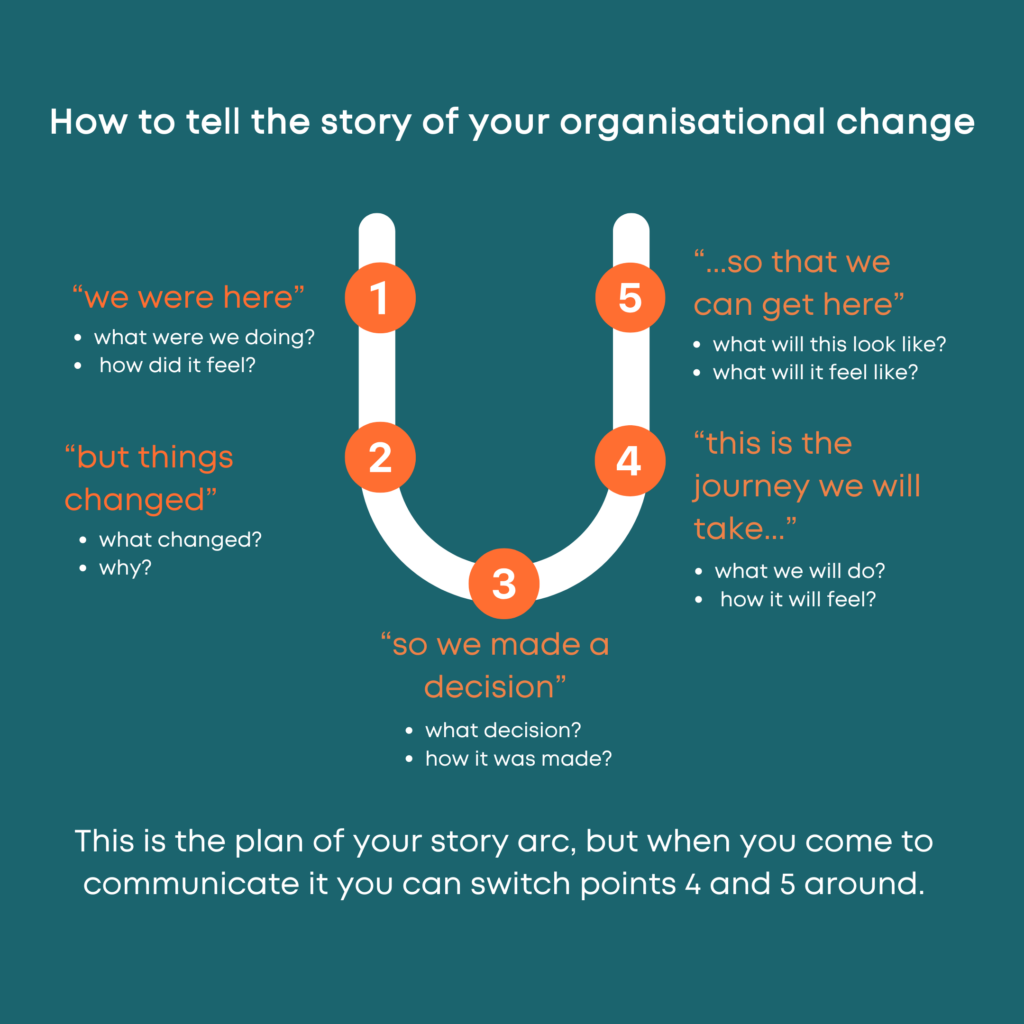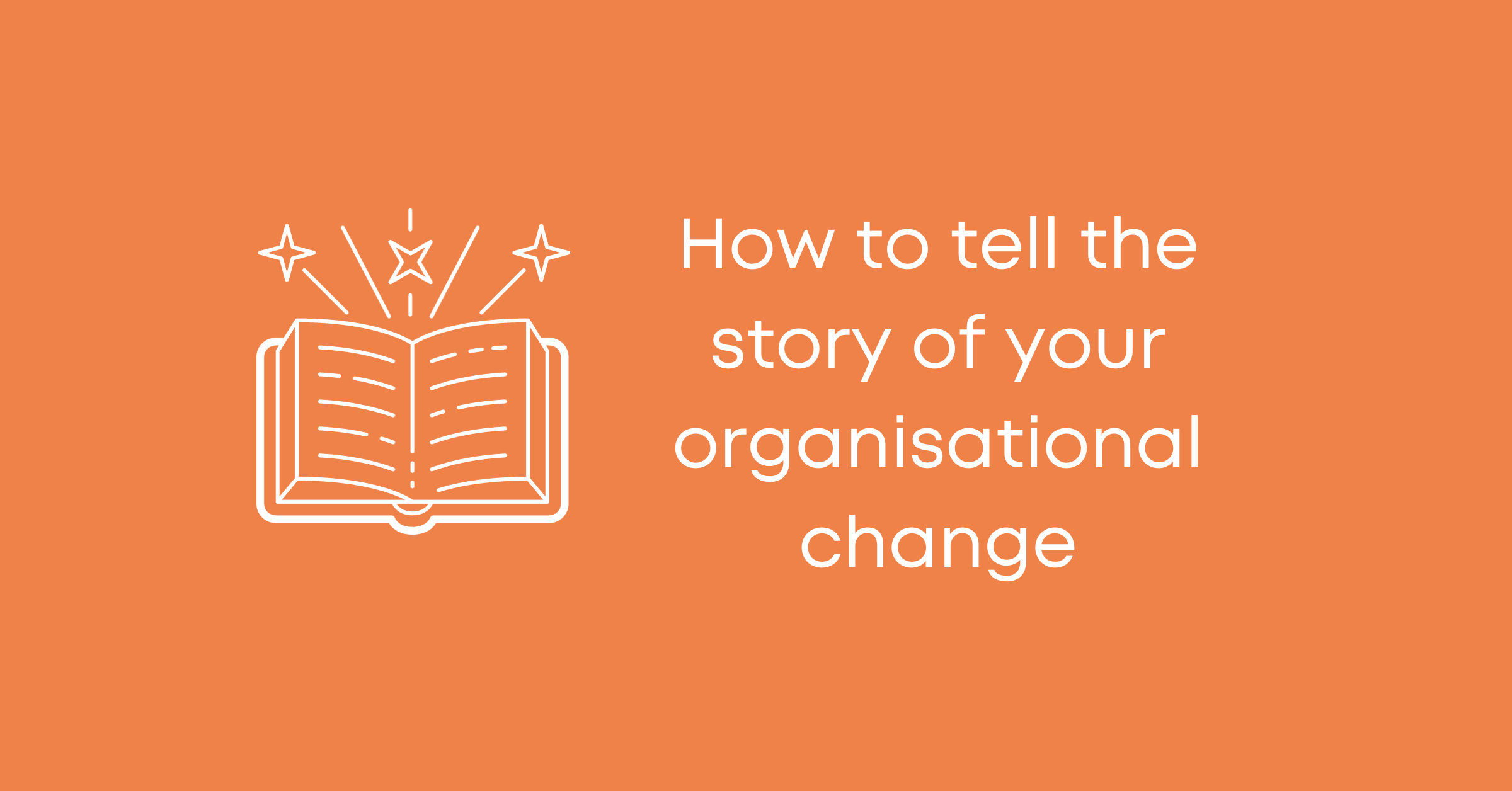Effective storytelling is a powerful tool for leaders. In this blog post, we’ll explore the importance of effective storytelling for leaders and how to use it to become a more effective leader. By using effective storytelling, you can create a more engaging and inspiring environment for your team.
As leaders, we often focus on the facts, but as humans, our brains are naturally wired for stories.
Our subconscious brain, the powerhouse of all behaviours, is always listening out for stories (good and bad ones) to create meaning. By communicating with stories, leaders can help people make sense of change. A story paints a picture, and a picture paints a thousand words.
The art of storytelling is simple once you get some practice.
Here are 5 steps to craft your story:
- Where are you starting (or started) from? What’s the past that needs to be honoured? Often, we need to acknowledge the past before we can move forward, sometimes this is about the positives and the negatives that make up the history of the organisation. This doesn’t need to be a long extension back into time; it’s just an acknowledgment of where the organisation was prior to the events that caused the need, or desire, for change.

2. What happened? What were the events or conditions that led to the change you are about to make? These might be external conditions such as customer expectations, cost impacts, supply chain, global markets etc. They could also be internal events such as high turnover, poor culture, or lack of cohesion between departments.
3. What’s the turning point? What is the decision, new direction, or change that is going to happen?
4. What will that look like? What does the new way forward look like, what is the plan, and what will be done differently?
5. What’s the vision? What is the long-term goal or aspiration? This is your rich description of the future when the change is completed.
One last (but main) ingredient in the story is emotion. Our subconscious minds are alert to any emotion. Stories need emotion to tag them as important to us.
For each of the steps above, there is an emotion; you need to find what it is: contentment, joy, excitement, confusion, frustration, pride, enthusiasm, disappointment…and many more. For a story to have impact and be remembered, it needs the emotional tags added to each step.
This doesn’t need to be a long story; at best it’s a few sentences, not a paragraph. Think of it as the elevator pitch of the change you are making. Once you have it drafted, practice it often, change and adapt depending on how it’s received or how it sounds to you. Storytelling is an art; it takes conscious practice to get it flowing, but it’s a really impactful method of communicating for leaders.

The last (but main) ingredient in the story is emotion. Our subconscious minds are alert to any emotion. Stories need emotion to tag them as important to us.
For each of the steps above there is an emotion, you need to find what it is: contentment, joy, excitement, confusion, frustration, pride, enthusiasm, disappointment…..and many more. For a story to have impact and be remembered, it needs the emotional tags added to each step.
This doesn’t need to be a long story, at best it’s a few sentences, not a paragraph. Think of it as the elevator pitch of the change you are making. Once you have it drafted practise it often, change and adapt depending on how it’s received or how it sounds to you. Storytelling is an art, it takes conscious practise to get it flowing but it’s a really impactful method of communicating for leaders.
For help with leading change contact me at Sarah Robertson Consulting or book a discovery call



